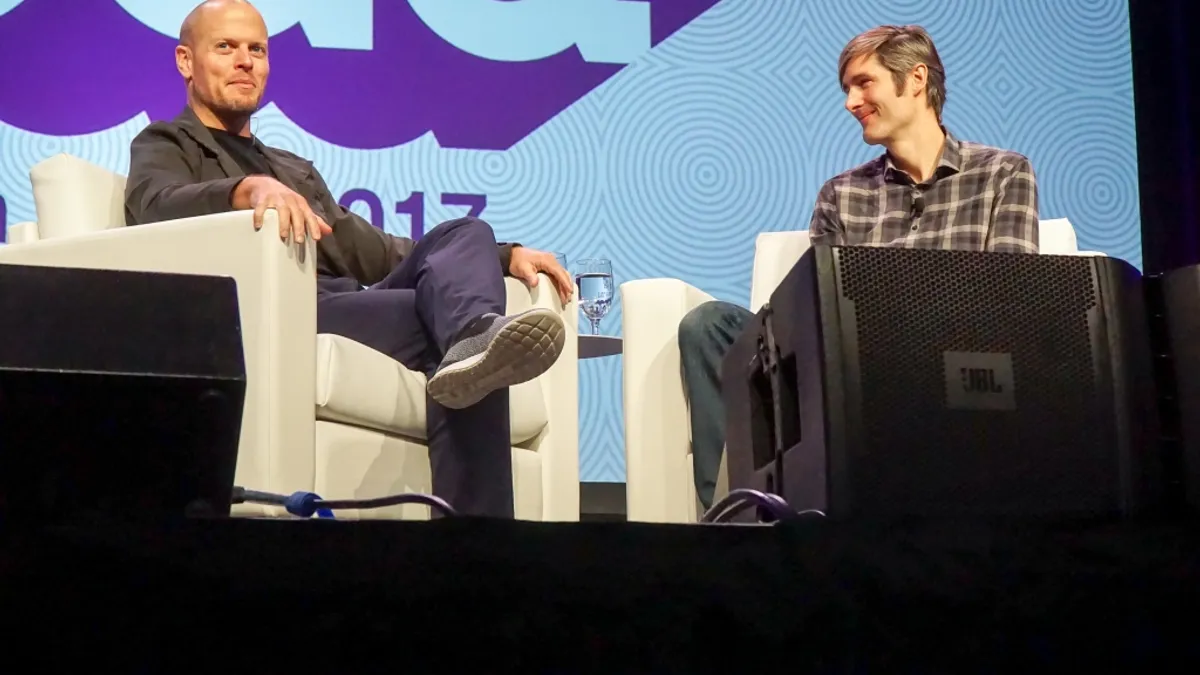Though the news announcements slowed down, SXSWedu continued rolling on Wednesday. The day opened with a keynote that saw “Tools of Titans” and “The 4-Hour Workweek” author Tim Ferriss engage in a conversation with DonorsChoose.org Founder and CEO Charles Best on the secrets of accelerated learning and mastery.
ATTN COLLEGE STUDENTS: "Sleep is a great multiplier of many other things." @tferriss #sxswedu #preach This campus norm needs to change!
— Bailey Urban (@bailey_urban) March 8, 2017
@EanesSupt @SXSWedu So inspiring & validating!My beliefs that started as gut hunches r confirmed. #SEL #reslience #beuncomfortable @tferris
— Kristen Vengler (@msvengler) March 8, 2017
New York City’s big bet on equity and excellence for all
It should come as no surprise that the nation’s largest and most diverse school district is also among the most progressive in its approaches to serving all students. In a packed Wednesday morning session, New York City Schools Chancellor Carmen Fariña and NYC Department of Education COO Ursulina Ramirez discussed the city’s efforts around universal pre-K, literacy and math, as well as expansions of access to computer science and advanced placement courses — the latter of which are now available to students in each of the city’s zip codes.
Key to Fariña’s leadership approach is her background of experience, which includes over two decades as a classroom teacher and 10 years as a school principal. Part of the key to the city’s success is her hands-on approach to giving individualized feedback to school leaders (she visits four schools a week) and uses her experiences to establish and maintain rapport with the city’s educators. Additionally, the district under her guidance has made efforts to engage parents with workshops and direct communications — available in a variety of languages that includes Urdu, Arabic and Hindu — and keeps the community in the conversation around changes. Also critical: Maintaining a good relationship with the city’s teacher union and making sure all positive developments are highlighted and shared, rather than focusing on negatives.
We caught up with Fariña after the session, so keep an eye out in the coming days for a closer look at her approach to educational leadership.
Is it time for liberal arts 2.0?
An afternoon panel, moderated by Minerva Schools Global Experience Director Z. Michael Wang, Smith College President Kathleen McCartney, Kenyon College President Sean Decatur, and Franklin & Marshall College President Daniel Porterfield explored the current challenges facing liberal arts schools.
In defining the liberal arts, the trio said that they are grounded in respect for the multiplicity of cultures and values, and in preparing students to participate and engage as responsible citizens of the world while providing them with the capacity to communicate and work with diverse people. Unfortunately, however, these fields have been contested in recent years due to a number of myths.
Among these myths: that liberal arts grads don’t get jobs, that there’s no correlation between those disciplines and the purpose of getting a career, and that liberal arts don’t include the sciences and are therefore just the humanities. A liberal arts education, Decatur contended, gives students the understanding to grapple with fundamental questions. McCartney and Porterfield both noted that liberal arts degrees haven’t stopped graduates from getting careers in a variety of fields, and that the education prepares students to continually learn and pick up new skills and pivot with workforce changes.
Still, it may be time for a rebranding, and one audience member suggested that perhaps transcripts could be changed to better communicate to employers the value of what someone learned in, say, medieval literature.









 Dive Awards
Dive Awards


